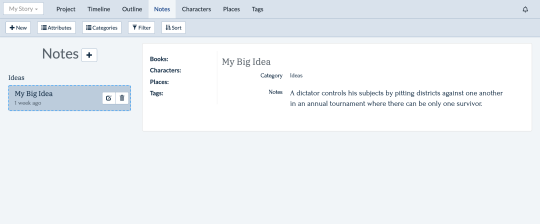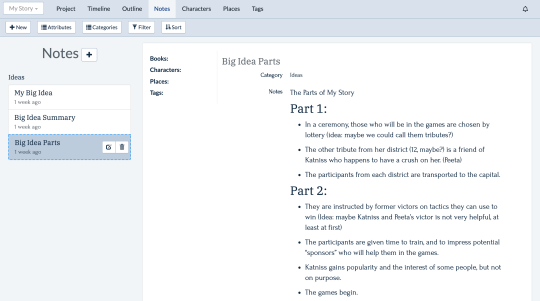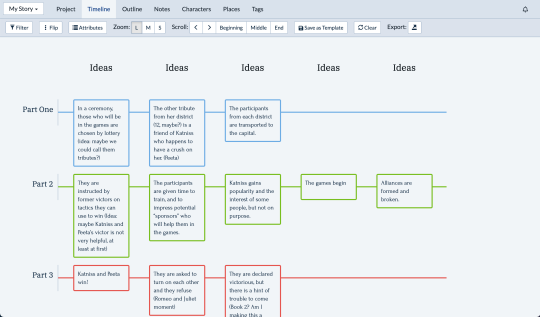4 Easy Steps for Outlining a Novel as a Pantser

Every year, we’re lucky to have great sponsors for our nonprofit events. Plottr, a 2021 NaNo sponsor, is a visual outlining software that helps you plan your book for success. Today, author Troy Lambert shares some tips for outlining a novel when you’re used to flying by the seat of your pants:
Pantsing a novel can be great—after all, writing into the dark and discovering the story as you go is kinda fun, right?
But you probably also know it can lead to nonsensical plots, writer’s block, and endless rewrites.
Well, don’t worry. As a book coach, editor, and mystery author of over 25 novels, I’ve been there myself… and I understand exactly what you’re experiencing.
The good news is you can use this simple four step formula to give yourself the best of both worlds: a general roadmap for your novel that still lets you take fun detours along the way.
Step 1: Write Down Your Big IdeaThe Big Idea (with capital letters) of your story is what most pantsers start with.
You have a character, a world, and a general sense of what your book or story will be about, and then you sit down, write, and discover what happens.
For example, the Big Idea of Hunger Games might be described as follows:
A dictator controls his subjects by pitting districts against one another in an annual tournament where there can be only one survivor.
So, Step 1 of my outlining process for pantsers is simple: jot down your Big Idea on paper or in an outlining tool like Plottr.
 Step 2: Write a Summary of Your Big Idea
Step 2: Write a Summary of Your Big IdeaThis is where you let your pantser flag wave proudly for all to see.
(I say “think will happen” because we all know your story can take new turns as you write it.)
All you are doing here is fleshing out your idea into a short narrative – as short as one page to as long as three or four pages.
These ideas do not have to be in the exact order they will happen in the book.
Just try to answer this question: what does the reader need to know for your story to work?
Using the Hunger Games by Suzanne Collins as an example, we can even put the summary of the Big Idea into bullet points:
In a ceremony, those who will be in the games are chosen by lottery (idea: maybe we could call them tributes?)The other tribute from her district is a friend of Katniss who happens to have a crush on her. (Peeta)The participants from each district are transported to the capital.They are instructed by former victors on tactics they can use to win (idea: maybe Katniss and Peeta’s victor is not very helpful, at least at first)The participants are given time to train, and to impress potential “sponsors” who will help them in the games.Katniss gains popularity and the interest of some people, but not on purpose. The games begin.Etc.You can see from this very short example that we haven’t even gotten to the scene level yet.
This is just a series of things that could happen, sprinkled with potential ideas we might use along the way. There is nothing here that will impact your muse and your ability to be creative and spontaneous when you actually start writing the book later.
To recap, then, Step 2 of my Pantster Outline Formula is to sit down with your Big Idea and write a summary of the events you think will happen in the book to support it.
 Step 3: Divide Your Big Idea Into Parts
Step 3: Divide Your Big Idea Into PartsOnce you have created your summary, it’s time to divide it into parts.
How many parts? It doesn’t really matter. You can divide it into three acts, four acts, or three sections simply labelled beginning, middle, and end.
If you’re a pantser, the key is not to divide the summary of your Big Idea into too many parts. Then it can start to feel like a real outline, which can cause writer’s block, stifle your creativity, and make you want to chuck your computer at the wall.
Taking our Hunger Games bullet points above, we can start to organize them like this:
Part 1:
In a ceremony, those who will be in the games are chosen by lottery (idea: maybe we could call them tributes?)The other tribute from her district is a friend of Katniss who happens to have a crush on her. (Peeta)The participants from each district are transported to the capital.Part 2:
They are instructed by former victors on tactics they can use to win (idea: maybe Katniss and Peeta’s victor is not very helpful, at least at first)The participants are given time to train, and to impress potential “sponsors” who will help them in the games.Katniss gains popularity and the interest of some people, but not on purpose. The games begin.You could think about if the story works better as a three act or four act structure, but don’t get in your own way.
In other words, Step 3 of this process is to divide your Big Idea Into parts until you generally feel comfortable—and then stop.
 Step 4: Map Your Small Ideas for Each Part
Step 4: Map Your Small Ideas for Each PartThis is where things get a little different for each pantser.
At this point, you may notice certain things are out of order or that you’re missing some pieces you need to make the story work.
It’s time to start building out the parts of the story you’ve outlined with your small ideas.
Small ideas are the moments and events that happen in each part of your story that give it life – a scene or a chapter, for example.
So, how can you map your small ideas to its parts?
Well, that answer is as individual as your writing style and your story. But let’s think about this.
Our first bullet point was this: “In a ceremony, those who will be in the games are chosen by lottery (idea: maybe we could call them tributes?).”
The small idea to flesh this out could be:
Katniss goes to the lottery ceremony with her sister Prim, who is attending for the first time. Prim is chosen, and Katniss takes her place because she knows her young sister won’t survive the games. The second tribute from her district is chosen, and she is devastated that to win herself, she may have to kill someone she cares about.
You could break this out into bullet points or whatever format you prefer.
The point is this – we have now introduced Katniss’ sister, some additional tension and conflict to the lottery (already a bit stressful), and we have a little more detail via our small ideas that can keep you going for a chapter or two.
Do this for each bullet point, adding as many small ideas as you need to make it easy (and fast) to write each section, but not so many that it overwhelms you.
To make this process even easier, you can use a software program like Plottr (the one I swear by), a book outlining tool that lets you visualize your ideas.
Step 4, then, is to map your small ideas for each part.
And voila! Once you’ve done that, you have your first outline.
 Start Writing!
Start Writing!Now that you have a basic outline, it’s time to get pantsing… I mean writing.
(To help, you can download the sample Plottr file from this article here.)
But when and how do you use your handy dandy roadmap?
If you feel stuck or a bout of writer’s block coming on—or even if you’re just not sure where you are in your story and what you need to write today—pull out your outline and find the clues you have left for yourself.
You won’t know exactly how things are going to happen or what your characters will do next (that’s the point!), but at least you’ll have an idea of where you are headed.
And that can make the difference between starting your novel and finishing.

Troy Lambert is a mystery author, editor, and publisher who has written over 25 novels. An associate member of the International Thriller Writers Association, he has spoken at LTUE, Westercon, the Plotting Summit, and often presents for the Idaho Writers Guild. He’s currently the Education Lead for Plottr, a visual outlining tool for writers. Troy lives in Boise, Idaho with his wife and a pack of very talented dogs. You can learn more at troylambertwrites.com.
Top photo by Kelly Sikkema on Unsplash.
Chris Baty's Blog
- Chris Baty's profile
- 63 followers



